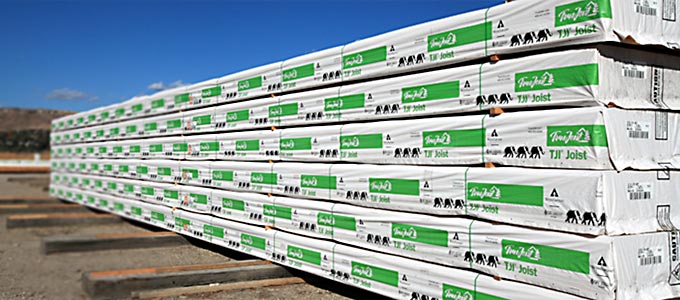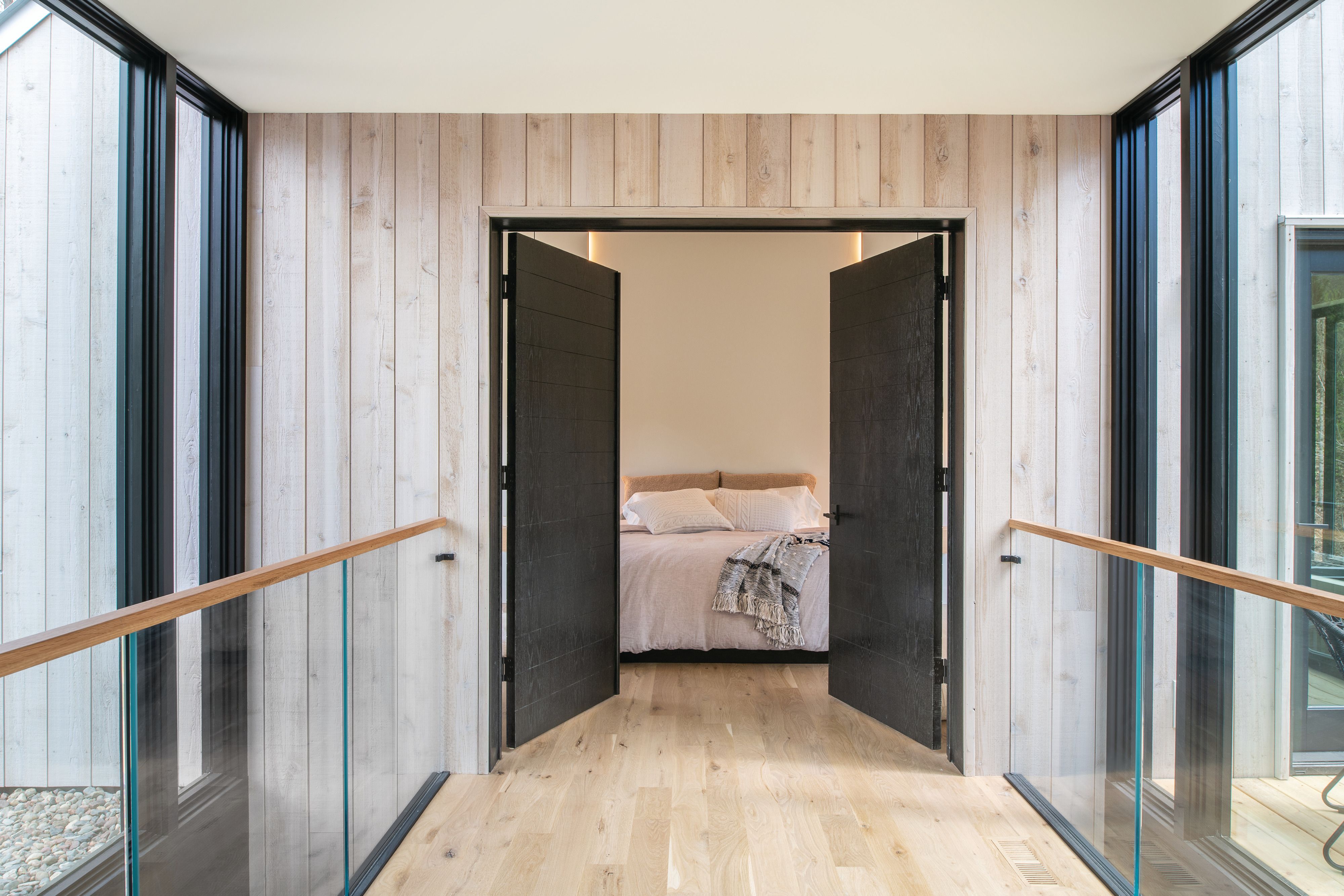
Engineered wood products have many advantages: consistency, strength, stiffness and dimensional stability. However, it’s important to remember that they are still wood products and moisture can compromise this integrity. Since 1969, we have been dedicated to manufacturing high quality Trus Joist engineered wood products. We focus on packaging and yarding to ensure the highest quality Trus Joist materials are delivered to the jobsite, and to reduce product waste. Please consider the following steps for proper storage and handling of Trus Joist products.
Proper handling poster
Click here to download our proper storage and handling poster to get all the information below in a colorful, informative way. Feel free to print it off and hang it around the office.
Safety First
- Maintain good visibility in the yard so that others can see you.
- Caution others to risks by posting signs for high-traffic areas and blind corners.
- Make sure units of Trus Joist product are evenly stacked, with longest units on the bottom and shortest on top.
- Stack heights should be limited to three times the unit width for flat, paved surfaces – the height may need to be reduced for uneven or gravel yards.
- Follow forklift loading and operation best practices to ensure safety while moving products.
- Make sure you space forks for safe handling and balanced loads and note that spreader bars may be required for longer units of material.
- A designated cutting station with a raised area will help reduce back strain from associates bending over to cut products.
- Lumber Buddy™, straps, and a dumpster in close proximity will help keep the area neat and further reduce injury risks.
Storage
Wood products may be exposed to sun and water for several months during the framing of a new house. Therefore, it is critical to keep Trus Joist engineered wood products wrapped and protected from the elements until they are delivered to the jobsite and installed. Some suggestions:
- Allow airflow around units – Trus Joist products should be stacked on 6″ x 6″ support blocks (minimum); 10′ on center to keep products off the ground and out of mud and water. 2″ x 3″ stickers should be used between units at the same on-center spacing to properly support the units and allow forks to get between the units without causing damage.
- Open units can be “tented” to keep them covered. It may be necessary to replace wrap older than 6 months due to UV degradation. Large tears will also require wrap to be replaced.
- Consider re-wrapping all products that are not fully protected from rainfall.
- Small tears in wrap can be repaired by wrap repair tape.
- Consider using a “T-shed” or other covered storage to keep opened products covered and protected.
- TJI® joists should be stored and handled in the vertical orientation while Trus Joist beam products should be stored and handled in the flat orientation.
- Consider resealing cut ends of beam products to prevent swelling or cupping.
- Allow products to dry before sending them to a jobsite.
Failure to protect engineered wood products could lead to cupping, swelling, weathering or mold growth when exposed to excessive moisture. If mold growth does occur, small areas of mold can be cleaned with a detergent and water solution, per EPA recommendations, or a solution of 1 cup bleach to 1 gallon of water, per CDC recommendations. For more questions and answers about mold, mildew or wood decay view this FAQ sheet.
Wrap, wrap repair and sealer
Contact your local Weyerhaeuser representative if you would like to purchase additional product wrap, wrap repair tape or end sealer. See our document for a list of our products.
Receiving & Delivering
- Consider placing your fastest-moving products closest to the entrance and/or exit.
- Ensure trucks can easily get into and out of the receiving area and provide plenty of room for loading and unloading.
- When receiving products at the yard, check products against the delivery receipt.
- Confirm that the product stamps and unit labels match.
- Once products have been cut, mark material lengths on the cut pieces and group them together by length.
- For jobsite packages, label 1st floor and 2nd floor packages for easy identification at the jobsite. If possible, utilize NextPhase® Site Solutions’ JobPack capabilities to cut joists to length, pre-package, and label framing members.
- Provide a framing layout and installation guide for the framer with the jobsite package.
- Send jobsite packages with support blocks, stickers, and wrap to keep products clean and dry until they are installed.
We share these suggestions in the interest of ensuring top quality Trus Joist products are delivered and installed, while limiting waste at the yard and the jobsite.


